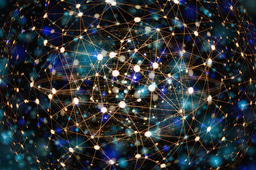Editor’s note: Anthea Blackburn is a graduate student based in the US who is attending the 63rd Lindau Meeting of Nobel Laureates (this year dedicated to chemistry) in Germany. Anthea is writing daily blog posts from the meeting for the Sceptical Chymist. Posts from days 5 and 6 are being posted a little late, sorry for the delay.
– – – – – – – – – – – – – – – – –
Five days down, only one to go. It’s hard to believe that the 63rd Lindau Meeting is almost over.
Photo courtesy of Anthea Blackburn
My day began (very early) with a science breakfast hosted by BASF and attended by a number of the BASF staff, as well as Laureates Mario Molina and Richard Schrock. This breakfast was designed to create dialogue between the students and those who are more advanced in the field. The session used a world café style to answer the question “What do we need to do to improve the state of the world for our grandchildren?” A number of topics were raised throughout the morning, ranging from various scientific approaches with which we can achieve this aim (most stemming from the use of the sun), to how and who we need to educate to begin to help the general public realize the problems we have ahead of us as a society. The thing I found most surprising, however, was that when speaking with a senior member of BASF, he was completely blown away when we suggested the concept of education. Hopefully this isn’t something all chemical industries are unaware of…
The formal talks began with Werner Arber, Nobel Prize in Physiology or Medicine in 1978, the ‘oldest’ of the Nobel Prizes present at Lindau this week. Arber took us through a history of development (using his original slides!) in the study of genetic information, and the impact of these scientific advancements on civilization, particularly genetic engineering. This process of inserting or removing parts of a genome from a cell has the potential to create a species that could be beneficial to humankind but, in the short term, we obviously need to consider the pathogenicity and toxicity of the new species that we are creating, both to humans and to the environment. In the long-term, the influence of these species on bio-evolution becomes important, specifically the process of natural selection, which can be affected by the introduction of non-natural species. We, as scientists, need to ensure that when helping to improve civilization, we aren’t forcing evolution too far against the grain of Darwin’s theory.
We continued on a similar theme of conserving the environment with Mario Molina, Nobel Prize in Chemistry in 1995, this time in terms of climate change. Molina built on what was presented in the last few days to further support the fact that society is changing the climate, and talked about the effects that this change is having on the world around us. He stressed that we need to find a way to convince the public that science is a series of observations and facts, not a belief system, and (more importantly) we need to convince politicians to make policies that may help us begin to reverse or halt our relentless damaging of the environment. To make a start on this convincing, we need to ask the right questions — instead of asking whether an environmental event is caused by climate change, we should ask whether the quantity of environmental events have increased with climate change. Furthermore we need to ensure that we, as scientists, as well as those making decisions, look at all the data, and not just that which supports the conclusion we want to present. Science doesn’t tell us what to do, it tells us the facts. We need to rely on our ethical values to help us in deciding what needs to be done. And we can be certain that something needs to be done.
This impassioned presentation was followed by one packed with advice, this time on our future careers in science, from Avram Hershko, Nobel Prize in Chemistry in 2004. Hershko likened his work on the study of protein degradation to that of pulling apart a watch — if you can pull a watch apart, study its components and put it back together such that it works in exactly the same way, you truly understand its function. In this way, it is now known that it is the process of covalent ligation of ubiquitin to proteins that tags the molecule for degradation by enzymes. And the advice provided? Readers take note: have good mentors in important subjects that are not yet interesting to others, otherwise the big guys will beat you to it. Use whatever scientific approaches are required for your objective, regardless of whether they are state-of-the-art. Science should be a curiosity-driven adventure, so never leave benchwork and you will continue to experience fun and adventure. Finally, accidental observations may be the most important ones, so don’t ignore anomalies in your results.
Theodor Hänsch, Nobel Prize in Physics in 2005, spoke of lasers next. I have never been too excited about physics; I appreciate its importance in all aspects of my life, but that was about it. Until now. Hänsch showed us the power of animations and a well-thought-out presentation to inspire interest in an audience in a topic that I had never even encountered until now — laser frequency combs. In a nutshell, these are laser setups that combine a set number of laser pulses at specific (and different) frequencies that resonate between two mirrors. As you can imagine, interference occurs, with the resultant wave of light being one with a very controlled periodic wave, which can be used for extremely precise measurements. This sensitive technique has the potential to generate and improve a number of techniques, some of which are even chemistry-related, such as Fourier transform spectroscopy, and may also help us to figure out whether fundamental constants are actually constant. And how did I become so interested in this phenomenon? The animations! There is no better way to understand a new concept than through watching a pretty movie on the screen. Hopefully that doesn’t make me sound too shallow!
The next talk was from Alex Müller, Nobel Prize in Physics in 1987, for the discovery of superconductivity in ceramic materials; research that is now carried out by a large number of groups around the world. We were fortunate enough to be presented with unpublished research on a new technique to synthesize these ceramic materials in which samples are irradiated with halogen light (which heats the sample very quickly) for a very short period of time. Furthermore, if a combination of halogen and UV light is used, the level of superconductivity can be maximized. This photo-stimulated solid-state reaction offers a much simpler method of synthesizing these interesting materials than traditional furnace-based approaches, and they have potential uses in magnets, solid-state fuel cells, solar cells and catalysts.
Next up was Robert Huber, Nobel Prize in Chemistry in 1988, for obtaining the solid-state structure of the reaction center of Photosystem II, a crystal structure that I have shown in a number of research presentations. The advent of biological crystallography, and the advances in technology since have garnered a large number of Nobel Prizes over the past few decades, which for some traditional chemists has been a bit of a sore point. So why is this research so important? The key is the future research that might be possible in medicine and biotechnology when we understand what occurs in cells at the molecular level. The proteasomes that Huber discussed are no exception. If we can begin to mimic the structure and function of these molecular machines, either synthetically or through modification of natural systems, then advances in medicine await.
The last talk of the day from Harry Kroto, Nobel Prize in Chemistry in 1996, finished the presentations from the Laureates on a high. Many of you will have seen or heard of Kroto’s presentations, and this one didn’t disappoint. The enthusiasm with which he presents is contagious and thought-provoking, and inspired conversations well into the afternoon. Science is evolving, as are the contributions of chemistry to society and it is this that we need to remind others about — without science there would not be anaesthesia, penicillin or DNA fingerprinting. Without science and chemistry we will not be able to solve the problems facing the world today. In order to achieve this, we need to begin to differentiate between common sense (what we know to be true), uncommon sense (what we have accepted without evidence), and nonsense. For example, we have all known since childhood that the earth orbits the sun and spins on its axis, but what evidence are we taught that we know that this is true? In order to use science as a tool in convincing the general public that science will help, we need to present them with the facts and data, ask questions, and allow them to draw their own conclusions. Our survival is a ‘Global Citizenship Project’ and only in including the general public will we be able to survive. Of course, a Kroto talk would not be complete without a number of jokes, and this presentation was no exception. We were also treated to something I imagine doesn’t happen quite so often — a (very PG-13) strip show, in which shirts were removed and we were shown the t-shirt Kroto has designed and marketed with an image depicting Darwin’s theory of evolution. What a way to finish!
We were again able to learn from Kroto, as well as from Brian Kolbilka, and Ada Yonath, along with Beatrice Lugger (Deputy Science Director, National Institute for Science Communication) and Simon Engelke (Maastricht University), in a panel discussion entitled “Why Communicate?” This discussion covered the whats, whys and hows of communication in both bidirectional (scientist to scientist) and unidirectional (scientist to non-scientist) manners, especially in the very technological world in which we now live. The take-home message from the session was that we must develop a voice in online media to start a dialogue with people of all backgrounds, scientific or otherwise. In this way we can share our passion, and perhaps gain new, beneficial knowledge from other scientists, as well as inspire interest in what we are doing with the general public. The majority of scientific research is indirectly funded by the general public, so we have an obligation to them to not only carry out research that can help them, but also to share with them the importance of what we are doing.
The evening finished as the week started, with a party (of course!), this time dedicated to the Bavarian culture (Lindau is situated in the state of Bavaria). We heard from various Bavarian politicians, as well as a presentation from a local Bavarian music ensemble and dance group, who showed us some of their cultural dances. This was followed by Bavarian food and beer, which was from Weihenstephan Brewery, one of the oldest breweries in the world! A nice… and historical way to end the Lindau portion of our week!




Please sign in or register for FREE
If you are a registered user on Research Communities by Springer Nature, please sign in